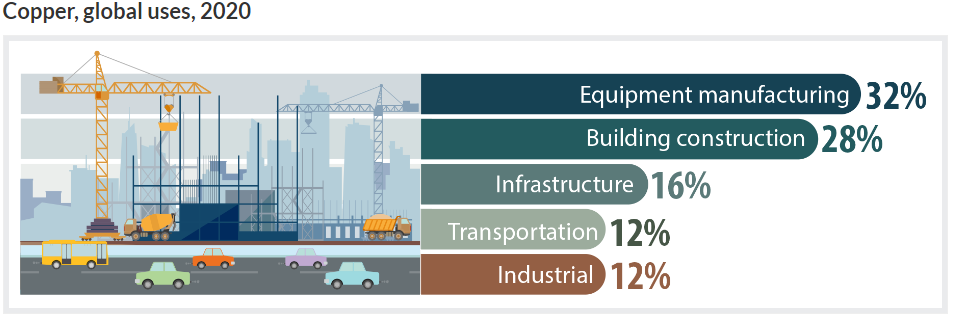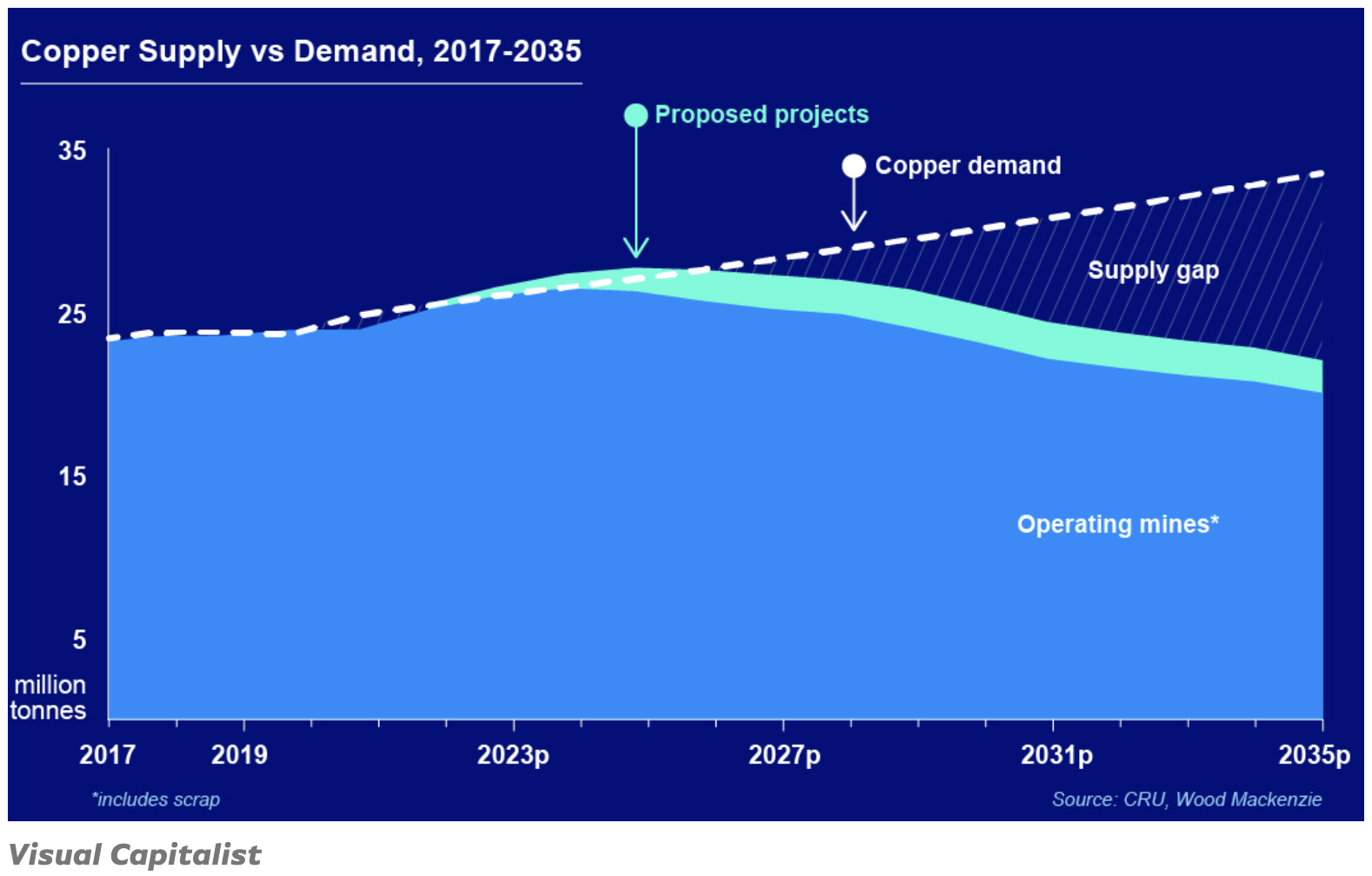Copper Industry:

Copper is a base metal that has an abundant amount of uses based on its properties of malleability and conductivity. Copper ore deposits are found on every continent, and has been mined around the world for over 10,000 years. Copper is a necessary component for many products in the modern world.
The copper industry is a major contributor to the global economy. According to The Copper Alliance, one tonne of copper brings functionality in 40 cars, powers 100,000 mobile phones, enables operations in 400 computers, and distributes electricity to 30 homes. Important characteristics of copper include: its electrical and thermal properties, toughness and recyclability, it is non-magnetic, antimicrobial, and catalytic. Copper is cost efficient compared to other materials with similar attributes. The metal is a vital resource for current and future industries including electricity generation and distribution, medicine, automobiles and renewable energy.
In addition, the copper industry supports sustainable economies. Mines create employment opportunities, support and strengthen community public transportation systems, commercial/business infrastructures, community energy demands, and enable farmers to produce more and get their products to markets.
Global Copper Demand:
Copper is faced with a significant supply/demand gap over the next 15 years. Over 200 copper mines that are currently in operation will reach the end of their productive life before 2035. A lack of investment in exploration, development and production capacity, in combination with the growing demand for copper due to increased electrification, is expected to put upward pressure on the price of copper.
Copper demand has been growing rapidly through the 21st century with no signs of slowing down anytime soon. Copper is used in a variety of applications, mainly because of its unique electricity conducting properties, which also makes it difficult to substitute. It will become crucial for society in the future, given the expected increase of copper-intensive low carbon energy and electrification of transport technologies.
According to the 2022 The Future of Copper Report, by S&P Global, between today and 2035, achieving the Net-Zero Emissions by 2050 goals will translate into a rapid ramp-up of copper demand, increasing by more than 82% between 2021 and 2035. This ramp-up is largely driven by the required transition to clean vehicles and electrification of the economy. The automotive sector will be the biggest driver of copper demand through 2035, growing from 2.2 MMt/y in 2021 to 9.3 MMt/y in 2035. The electrification of the transport fleet is expected to have the largest impact on copper demand as EV sales increase rapidly to meet the Net-Zero Emissions by 2050 goals.
Increased infrastructure investment, particularly in developing countries, will continually benefit copper suppliers as updates to national power grids drive the production of wire and cable. In addition, advances in global manufacturing output are expected to bolster the use of copper metal in transportation equipment, industrial machinery, domestic appliances, and other durable goods.
As a result the projected increase in electrification, a recent study conducted by S&P global predicts copper demand to double by 2035, from the current demand of 25 million metric tons (MMt) to about 50 MMt by 2035.

Copper Fundamentals:
Sustainability: Two-thirds of the copper produced since 1900 is still being used. Few other resources can match that figure, and as environmental sustainability rises to the top of the global agenda, it makes sense that manufacturers will want to be seen as agents of positive change. Copper’s recyclability not only mitigates pollution caused by producing materials such as wood and plastic, but it’s also crucial to the recycling of minerals such as silver, gold, and nickel. Every year, 8.5 million tonnes of copper are recycled.
Electric vehicles: A battery electric vehicle requires 2.5 times more copper than a standard internal combustion engine vehicle. Much of that is in the electric motor, some in the battery. According to a report commissioned by the International Copper Association (ICA) for IDTechEx, the number of roadworthy electric and hybrid vehicles is expected to reach 27 million by 2027. Compared to the internal combustion engine, battery-powered vehicles require approximately more than 130 pounds of copper. So, all of those electric and hybrid vehicles add up to 600,000 tons of additional copper demand by 2027.
Global electrification: Electricity is central to many parts of life in modern societies and will become even more so as its role in transport and heating expands through technologies such as electric vehicles and heat pumps. Much of that power will be carried and distributed by copper. Including all of the global request for renewable energy, this demand will only surge further for wind farms and solar energy systems.
Sources:
https://copperalliance.org/
https://elmatica.com/news/2019-copper-development-why-how-and-what-expect/
https://www.sciencedirect.com/science/article/pii/S0921344918300041
https://www.freedoniagroup.com/industry-study/world-copper-3274.htm
https://www.machinedesign.com/materials/six-reasons-copper-demand-set-soar
https://www.nrcan.gc.ca/mining-materials/facts/copper/20506
https://www.nrcan.gc.ca/our-natural-resources/minerals-mining/minerals-metals-facts/copper-facts/20506
https://www.visualcapitalist.com/sp/visualizing-coppers-role-in-a-low-carbon-economy/